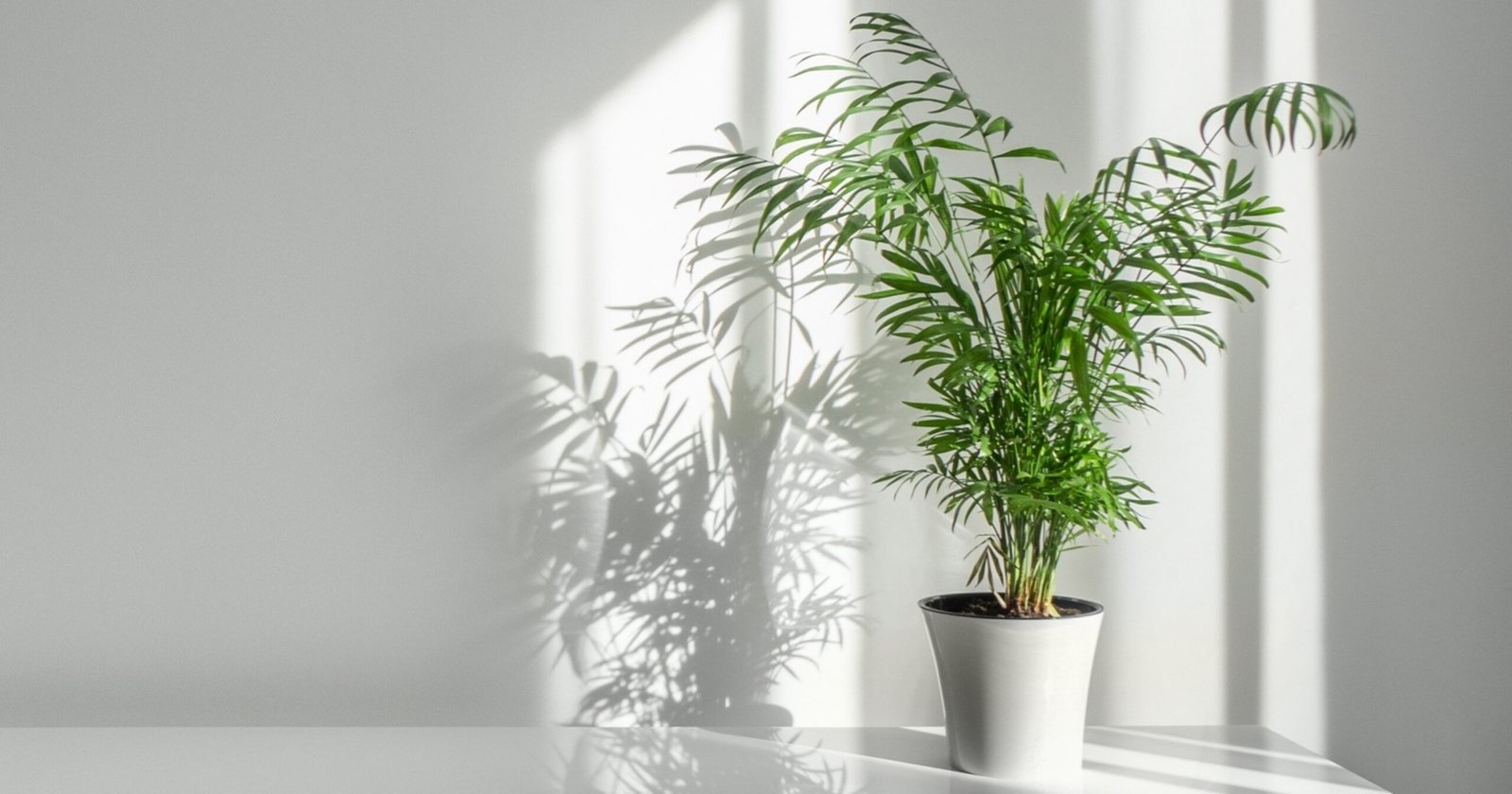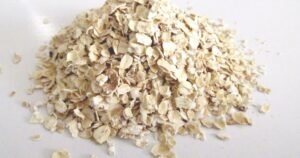Cat palms thrive in bright, indirect light and benefit from ample exposure to it. While they can withstand full sun conditions with appropriate watering, they generally prefer partial shade. Throughout the active growing season, which spans spring and summer, it’s recommended to fertilize Cat palms monthly using an all-purpose liquid fertilizer.
If you’re looking for a super easy houseplant to add some life and color to your home, then cat palm is the perfect choice. Its lush foliage and vibrant colors bring an instant touch of paradise into any room, but how do you take care of this popular indoor plant? In this blog post, we’ll go over all the tips and tricks needed to give your cat palm the best possible care so it can thrive in its new indoor environment.
This fast-growing and unique flush of bright green foliage adds a beautiful touch to any living room setting while still being something that’s not too difficult to look after, even if you’re a beginner. In this blog post, we’ll take a look at how to properly care for cat palms, including tips on selecting the right spot in your home, as well as guidance on watering and fertilizing them correctly. Read on and find out everything you need to know about caring for this impressive plant!
10 Simple Ways to Care for Your Cat Palm
1. Choose the Perfect Location
Selecting the right location for your cat’s palm is important for its growth. These plants develop in bright, indirect sunlight.
Too much direct sunlight can cause the leaves to burn, while too little light can make the plant lose its vibrant color.
Choose a location near a window where it can get plenty of light but isn’t directly exposed to the sun, like an east or north-facing window.
Be aware of temperature, too, as cat palms enjoy warmer conditions, ideally between 70-80 degrees Fahrenheit.
But, avoid placing your plant near air vents, heaters, or drafts, as sudden temperature changes can harm it.
In a nutshell, the perfect location for your cat’s palm is a warm, well-lit place away from direct sunlight and drafts.

2. Correct Watering Techniques
Watering your cat’s palm correctly is important.
These plants prefer moist soil, but they don’t like to sit in water.
Overwatering can lead to root rot, a serious issue that can kill your plant.
To avoid this, water the plant thoroughly, but make sure the pot drains well.
Wait until the top inch of soil is dry before watering again.
3. Monitor Humidity
Cat palms in a humid environment. Dry air can lead to brown leaf tips or pests.
A simple way to increase humidity is to place a tray of water near your plant or mist it with water regularly. Alternatively, consider using a humidifier.
However, avoid getting the leaves too wet as this can encourage disease. Thus, maintaining the right humidity level is key to keeping your cat’s palm healthy and vibrant.
By following these simple tips, you’ll ensure your cat’s palm flourishes, adding a touch of greenery to your home.
4. Use the Right Fertilizer
Just as we need the right food to grow and stay healthy, your cat palm also needs proper nutrition. Using the right fertilizer is important for the growth and health of your cat’s palm.
It’s best to use a balanced, water-soluble fertilizer and apply it to the soil every two weeks during the growing season (spring and summer).
Make sure to follow the package instructions carefully to avoid over-fertilizing, which can harm your plant.
In the dormant season, reduce fertilizing to once a month. Remember, over-fertilizing can do more harm than under-fertilizing.
So, the key is to give just the right amount of nutrients your plant needs to thrive.
In other words, proper fertilizing is a sure way to keep your cat’s palm lush, green, and healthy.
5. Clean the Leaves
It’s important to clean your cat’s palm’s leaves. Dust Canada, blocking sunlight and reducing the plant’s overall health.
Gently wipe the leaves using a damp cloth, taking care not to damage them.
This will not only help your cat palm look its best, but it will also allow the plant to absorb more light, enhancing its growth and health.
Regularly cleaning your cat palm’s leaves is an easy and effective way to ensure your plant remains vibrant and healthy.
6. Prune Regularly
Regular pruning is essential for maintaining the health and appearance of your cat’s palm.
By removing dead or yellowing leaves, you allow the plant to focus its energy on new growth.
Use sharp, clean pruning shears to avoid damaging the plant and to prevent the spread of diseases.
Always prune at the base of the stem, and remember to be gentle to avoid hurting the plant.
Pruning is a simple task that can greatly improve the health and look of your cat’s palm, ensuring it remains a vibrant addition to your home.
7. Protect from Pests
Pests can harm your cat’s palm. Bugs like mites, scales, and aphids love this plant. If you see them, remove them quickly.
You can use a gentle spray of water or a soft cloth to clean the plant. For serious problems, use insecticidal soap or a houseplant pesticide.
Always follow the instructions on the label. Remember, a clean, healthy plant is less likely to get pests.
Keeping your cat’s palm pest-free helps it grow well and stay green and lush.
8. Repotting
Repotting your cat’s palm can help it stay healthy and grow larger. As the plant grows, it might need more space. Get a bigger pot that drains well.
Take the plant out gently from the old pot. Put some soil in the new pot. Place your plant in and add extra soil around it. Press gently so it stands firm.
Give it some water. Remember, repotting should be done only sometimes, only when your cat’s palm outgrows its current pot.
Doing this carefully can give your cat palm more room to grow and stay healthy.
9. Watch Out for Diseases
Cat palms can sometimes fall victim to diseases, including root rot and leaf spot.
Root rot, often caused by overwatering, can turn roots brown and soft. If you notice this, cut off the rotten parts and let the roots dry before repotting.
Leaf spots can appear as brown or yellow spots on leaves. If you see these, remove the affected leaves and avoid splashing water on the remaining ones.
Remember, keeping your cat’s palm healthy requires patience and regular care. But the rewarding sight of a thriving plant makes all the effort worthwhile.
10. Provide Love and Care
Last but not least, the secret ingredient to a healthy and vibrant cat palm is love and care.
Pay attention to its needs and respond promptly to any issues, and your cat palm will thrive, bringing you much joy and satisfaction.
With these simple steps, even a beginner can keep a cat’s palm healthy and beautiful.
So why wait? Bring a touch of the tropics to your home with the vibrant and lush cat palm.

Common Issues and Solutions for Cat Palm
1. Brown Leaf Tips
One common issue with cat palms is the browning of leaf tips. This often happens due to low humidity or lack of water.
Solution: Increase humidity around the plant by placing a tray of water near it or using a humidifier. Also, ensure the plant is getting adequate water.
2. Yellow Leaves
Yellow leaves can be due to overwatering or poor drainage.
Solution: Ensure the pot has good drainage and avoid overwatering. Wait until the top layer of soil is dry before watering again.
3. Leaf Spot Disease
This disease appears as brown or yellow spots on leaves. It often happens when water sits on leaves for a long time.
Solution: Remove the affected leaves and avoid getting the leaves wet when watering.
4. Root Rot
Root rot is often caused by overwatering, which makes the roots turn brown and soft.
Solution: If you notice this, cut off the rotten parts and let the roots dry before repotting.
5. Pests
Bugs like mites, scales, and aphids can damage your cat’s palm.
Solution: If you see these pests, remove them quickly. Use a gentle spray of water, a soft cloth, or a houseplant pesticide to get rid of them.
Remember, taking good care of your cat’s palm is the best way to prevent these common issues.
Regular watering, proper humidity, and attention to the plant’s needs will keep it healthy and vibrant.
Method To Grow Cat Palm From Seed
How To Care For Cat Palm? Growing a cat palm from seed is a rewarding but slightly challenging task.
It requires patience and care, but the result of having a beautiful and lush cat palm makes it all worthwhile. Below are the steps to grow a cat palm from a seed.
1. Buy Cat Palm Seeds
The first step is acquiring cat palm seeds.
You can purchase them from a reputable online store or a local nursery.
Make sure the seeds are fresh and of good quality.
2. Prepare the Seeds
Before planting, the seeds need to be prepared.
Soak them in warm water for 24 hours.
This helps soften the outer shell and speeds up germination.
3. Prepare the Soil
Cat palm seeds need well-draining soil to grow.
Prepare a pot with a mix of sand, peat moss, and compost.
This provides a nutritious environment for the seeds to germinate and grow.
4. Plant the Seeds
Plant the cat palm seeds about half an inch deep into the soil.
Ensure the seeds are evenly spaced to avoid overcrowding as they grow.
5. Provide Suitable Conditions
After planting, place the pot in a warm and bright location, but avoid direct sunlight.
Keep the soil moist but not waterlogged.
This creates an ideal environment for the seeds to germinate.
6. Wait for Germination
Patience is key at this stage. Germination can take several weeks, so don’t worry if you don’t see immediate results.
Keep the soil moist and provide the right conditions, and the seeds will eventually germinate.
7. Care for the Seedlings
Once the seedlings emerge, continue to provide care. Keep the soil moist and provide plenty of indirect sunlight.
When the seedlings have grown a few inches tall, they can be transplanted to larger pots if necessary.
8. Enjoy Your New Cat Palm
Finally, enjoy the fruits of your labor.
With proper care and attention, your seed-grown cat palm will grow into a lush and beautiful plant, adding a touch of tropical beauty to your home.
Common Diseases of Cat Palm
How To Care For Cat Palm?
Cat Palms are usually quite healthy, but they can suffer from a few diseases.
Here are some of the most common ones:
1. Leaf Spot
This disease causes spots on the leaves that are usually brown or yellow. It often happens when water sits on the leaves for too long.
If you notice this, remove the affected leaves and avoid wetting the leaves when watering.
2. Root Rot
Root rot is a problem that affects many plants, including the cat palm. It happens when the roots stay too wet. The first sign is usually yellow leaves.
If you see this, check the roots. If they’re brown and soft, the plant has root rot. To fix it, stop overwatering and let the soil dry out.
If it’s very bad, you should repot the plant in fresh soil. Remember, it’s important to water the cat’s palm correctly to avoid root rot.
3. Pest Damage:
Bugs like mites, scales, and aphids can harm your cat’s palm. If you notice these pests, remove them quickly.
You can use a gentle water spray, a soft cloth, or a houseplant pesticide to deal with them.
Remember, regular care of your cat’s palm is the best way to prevent these common diseases.
Regular watering, proper humidity, and paying attention to the plant’s needs will keep it healthy and vibrant.
Conclusion
How To Care For Cat Palm? Caring for a cat palm is a fulfilling journey. It starts with choosing to grow it either from an offshoot or a seed. For offshoots, ensure they are healthy before separating them from the parent plant. Then, prepare a pot with good drainage and rich soil to plant it. For seeds, soak them first and then plant them in a pot filled with a nutritious mix of soil. Regardless of your choice, always remember to place your cat’s palm in a spot with indirect light, keep the soil moist but not waterlogged, and watch for pests. In terms of diseases, be alert for leaf spot, root rot, and pest damage, taking action quickly when these signs appear. Regular attention to your cat palm’s needs is crucial. With patience, love, and the right care, you’ll have a lush, beautiful cat palm gracing your home.
FAQs
How to Get Cat Palm to Bloom?
To make your cat’s palm bloom, you need to provide it with the right conditions. First, place your palm in indirect sunlight and keep it in warm temperatures. Second, ensure the soil is well-draining to avoid waterlogged roots. Third, regularly feed your palm with a slow-release fertilizer to provide essential nutrients. Lastly, maintain a high humidity level, as palms love moisture. But remember, cat palms don’t often bloom indoors. If you follow these steps and your palm is mature enough, you might see flowers. Be patient and provide consistent care.
How Long Does Cat Palm Bloom?
A cat palm’s bloom period can vary, but it typically happens during the warm summer months when the plant is outdoors. The flowers usually last for a few days to a week. It’s important to note that indoor cat palms rarely bloom. Proper care, enough sunlight, and the right temperature are essential for the bloom. Even without flowers, cat palms are loved for their lush, feathery fronds that lend a tropical feel to any space.
Do cat palms need direct sunlight?
No, cat palms do not need direct sunlight. In fact, they prefer bright, indirect light. Too much direct sunlight can scorch their leaves, causing them to turn yellow or brown. It’s best to place your cat’s palm in a spot that gets plenty of light but not direct sunlight. This could be near a north-facing window or a spot that is shielded from the harsh midday sun. Even though they like light, cat palms can also tolerate lower light conditions, making them quite versatile houseplants.
Should I spray my palm with water?
Yes, spraying your cat’s palm with water can be beneficial. This is particularly useful in dry conditions or during the winter when indoor air can be quite dry due to heating systems. A light misting every few days is usually sufficient. However, be careful not to wet the soil too much, as this can lead to diseases like root rot. Always ensure the plant has well-draining soil and the pot has enough holes to let out excess water.
Is cat palm indoor or outdoor?
Cat palms can thrive both indoors and outdoors. They are popular as houseplants because they can grow well in lower light conditions. But they also do well outside in warm climates, as long as they are not in direct sunlight. Always remember to keep the soil moist, but avoid overwatering to prevent root rot. Whether indoors or outdoors, a cat palm adds a lovely tropical touch to its surroundings.
What do you feed a cat palm?
Cat palms enjoy a diet that includes slow-release fertilizer. This type of feed provides the plant with the essential nutrients it needs for growth. You should feed your cat palm every few months, especially during the growing season. But remember, overfeeding can harm your plant, causing the leaves to turn yellow or brown. Always follow the instructions on the fertilizer package and avoid overuse. With the right care and feeding, your cat palm will thrive, showing off its lush, green fronds.
How fast does a cat palm grow?
The growth rate of a cat palm depends on its care and environment, but generally, it grows slowly. With proper light, moisture, and nutrients, it can grow a few inches each year. It’s important to remember that patience is key when growing a cat palm. Even though it might take some time to see significant growth, the lush, green fronds of a well-cared-for cat palm are definitely worth the wait.
Can I put my cat’s palm outside?
Yes, you can put your cat’s palm outside. But remember, it doesn’t like too much direct sunlight. Find a place that has plenty of light but not where the sun will hit it directly. Also, make sure the soil stays moist, but don’t let water sit in the pot. It can cause the roots to rot. If the weather gets cold, bring it inside. Cat palms can’t handle frost or cold winds. They’re great plants for both inside and outside your house.
















